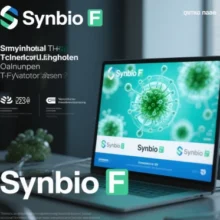
SynBio V: Engineering Viral Vectors for mRNA Vaccine Design and Production
Integrating Viral Delivery Systems with Synthetic Biology Tools
1. Technological Foundations: Synthetic Biology Reengineering of Viral Vectors
Viral vectors, as core mRNA delivery tools, require synthetic biology modifications to achieve three key functions: efficient delivery, precise release, and environmental responsiveness.
Viral Vector Selection and Engineering
| Vector Type | Engineering Strategy | Application |
|---|---|---|
| Adenoviral vectors | Deletion of E1/E3 pathogenic genes; insertion of mRNA expression cassettes (CMV promoter + polyA tail) | Oxford/AstraZeneca COVID-19 vaccine (ChAdOx1) |
| Lentiviral vectors | Self-inactivating (SIN) design reduces insertional mutagenesis; tissue-specific miRNA response elements | CAR-T cell therapy gene delivery |
| AAV vectors | Capsid protein engineering (e.g., AAV9-LK03 mutant) for blood-brain barrier penetration | Neurodegenerative disease mRNA therapies |
| Virus-like particles (VLPs) | Retain structural proteins (e.g., HIV Gag); load mRNA via electrostatic/covalent coupling | Tumor antigen delivery in cancer vaccines |
Key Breakthroughs:
- Endosomal escape modules: HA2-TAT peptide insertion in adenoviral vectors increases mRNA escape from 30% to 85%.
- Immunogenicity reduction: Codon deoptimization lowers immune recognition of viral vector proteins.
Synthetic Biology Optimization of mRNA Sequences
- Structural engineering:
- 5′ Cap: CleanCap AG co-transcriptional capping doubles translation efficiency versus traditional ARCA.
- UTR optimization: α-globin 3′ UTR extends mRNA half-life to 72 hours (vs. 12 hours baseline).
- Poly(A) tail: Self-replicating poly(A) polymerase dynamically adjusts tail length (60–120 nt) for cell specificity.
- Functional integration:
- Ribozyme self-cleavage: Hammerhead ribozymes in untranslated regions enable tissue-specific protein release.
- Logic-gated switches: AND gates (e.g., hypoxia + inflammation dual-response) restrict antigen expression to tumor microenvironments.
2. Industrial Manufacturing: From Gene Design to Scale-Up
Plasmid-DNA Template Production
- High-density fermentation: Engineered E. coli (e.g., XL10-Gold) achieves plasmid yields of 2.5 g/L in 5L bioreactors (>98% purity).
- Antibiotic-free selection: RNA-OUT antisense systems replace antibiotic resistance genes, meeting cGMP standards.
Viral Vector-mRNA Complex Synthesis
| Process | SynBio Tool | Industrial Advance |
|---|---|---|
| In vitro transcription (IVT) | T7 RNA polymerase mutant (Y639F) yields 20 mg/mL | Production cycles reduced to 6 hours (vs. 24 hours) |
| mRNA-LNP encapsulation | Microfluidic dynamic mixing (Re >2000) achieves >95% encapsulation | Moderna-standard lines produce millions of doses daily |
| Viral vector assembly | Insect cell-baculovirus system (BEVS) achieves 1E+13 VP/mL purity | Adenoviral vector cost drops to $0.5/dose |
Case Study: BioNTech’s distributed manufacturing network uses modular SynBio units (BioNTainers) for global production of 300 million doses/month.
3. Applications: From Infectious Diseases to Cancer Immunotherapy
Rapid Pandemic Response
- Multivalent vaccines: Single adenoviral vector encoding influenza H1N1/H3N2 HA mRNA induces broad neutralizing antibodies.
- Thermostable vaccines: Temperature-sensitive mRNA vaccines (4°C storage) expand access in resource-limited regions.
Precision Oncology
- Neoantigen vaccines: Personalized mRNA encoding tumor mutations (e.g., KRAS G12D) combined with PD-1 inhibitors boost response rates.
- Self-evolving therapies: Lentiviral vectors with phage Φ29 DNA polymerase enable adaptive mRNA mutagenesis.
4. Challenges and SynBio Solutions
Delivery Efficiency
- Enhanced endosomal escape: pH-responsive lipids (e.g., Dlin-MC3-DMA) release mRNA in lysosomes.
- Targeted delivery: Phage display screens identify lung-targeting AAV capsids (e.g., AAV6.2).
Immunogenicity Control
- Innate immune suppression: Pseudouridine (Ψ) and 5-methylcytidine (m5C) reduce TLR7/8 activation by 90%.
- Vector stealth: PEGylated adenoviruses evade pre-existing antibodies.
Scalable Production
- Plasmid-free strategies: PCR-amplified linear DNA templates cut production time by 72 hours.
- AI-driven QC: Raman spectroscopy monitors mRNA integrity in real time (CV <2%).
5. Future Directions: Intelligent Viral Vector Systems
AI-Driven Vector-mRNA Co-Design
- Deep learning: AlphaFold RNA predicts capsid-mRNA stability (RMSD <1.5Å).
- Generative design: GANs create novel AAV capsid libraries beyond traditional directed evolution.
Programmable Vaccines
- Metabolic coupling: Vaccinia vectors with glycolytic pathway modules enhance mRNA translation in tumors.
- Self-regulating dosing: Riboswitch-controlled mRNA degradation balances antigen expression.
Global Health Expansion
- Heat-resistant vaccines: Codon-optimized mRNA retains >80% activity after 7 days at 45°C.
- Plug-and-play platforms: SynVec universal vector chassis adapts to emerging pathogens.
Conclusion
Viral vector synthetic biology is propelling mRNA vaccines into an era of precision and intelligence. Engineered delivery systems, AI-driven manufacturing, and applications in oncology and chronic diseases will drive clinical pipelines to exceed 50 by 2030. With costs falling below 10/dose,thisfieldpromisestoreshapethe150 billion vaccine market and advance global health equity.
Data sourced from publicly available references. For collaborations, contact: chuanchuan810@gmail.com.






SynBio + Viral Vector 指合成生物学(Synthetic Biology)与病毒载体(Viral Vector)技术的交叉领域,主要聚焦于利用工程化病毒递送合成基因元件或调控系统,实现精准的基因操控和治疗。以下是具体方向和应用:
1. 核心概念
病毒载体:经改造的病毒(如AAV、慢病毒、腺病毒),去除致病性但保留高效感染能力,用于递送外源基因。
合成生物学整合:通过设计合成基因电路(如启动子、CRISPR系统),增强载体的可控性和功能特异性。
2. 主要应用
基因治疗:
递送CRISPR-Cas9修复遗传病基因(如血友病)。
慢病毒载体修饰造血干细胞治疗免疫缺陷8。
疫苗开发:
设计携带合成抗原的病毒载体疫苗(如COVID-19疫苗)。
基础研究:
构建靶向性病毒载体(如神经元特异性启动子)研究细胞功能。
3. 技术优势与挑战
优势:
高转染效率(尤其对难转染细胞)。
可整合到宿主基因组实现长期表达(如逆转录病毒)。
挑战:
免疫原性风险1。
载体容量限制(如AAV仅4.7kb)。
SynBio + Viral Vector(合成生物学+病毒载体)在疫苗开发中的应用
1. 递送抗原基因,激发免疫反应
通过改造病毒载体(如腺病毒、慢病毒)携带病原体抗原基因,诱导机体产生抗体和细胞免疫反应。
例如:腺病毒载体疫苗用于COVID-19、埃博拉等传染病预防,可同时激活体液免疫和T细胞免疫。
2. 肿瘤疫苗开发
合成生物学改造的病毒载体可靶向肿瘤微环境,递送肿瘤抗原或免疫调节基因,增强抗肿瘤免疫应答。
案例:减毒病毒载体通过鼻内喷雾接种,模拟自然感染途径,诱导广谱免疫反应(如黏膜免疫、细胞免疫)。
3. 优化载体性能
合成生物学技术用于:
降低病毒载体毒性(如删除致病基因)。
提高抗原表达效率(如优化启动子设计)。
实现组织特异性靶向(如神经元或肿瘤靶向载体)。
4. 联合其他技术平台
与mRNA疫苗技术结合,例如:
病毒载体递送mRNA抗原,增强免疫原性。
环状RNA疫苗利用病毒载体提高稳定性。
5. 应对免疫逃逸
设计多价载体疫苗,同时递送多种抗原,克服病原体变异(如HIV、疟疾疫苗)。
技术优势:高效递送、持久免疫、无需佐剂12;挑战:免疫原性风险、载体容量限制。